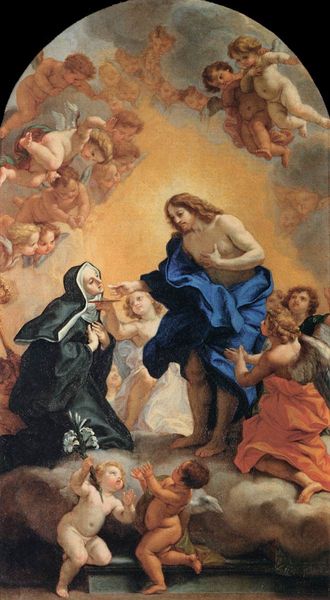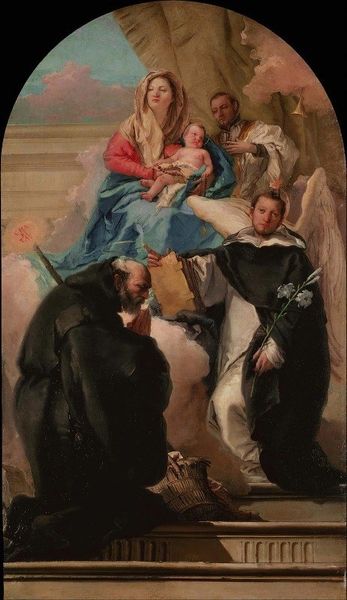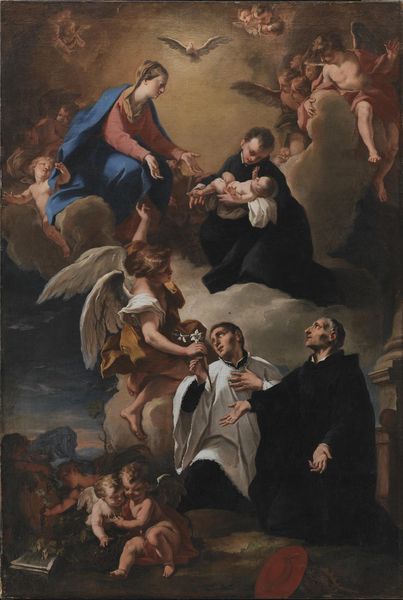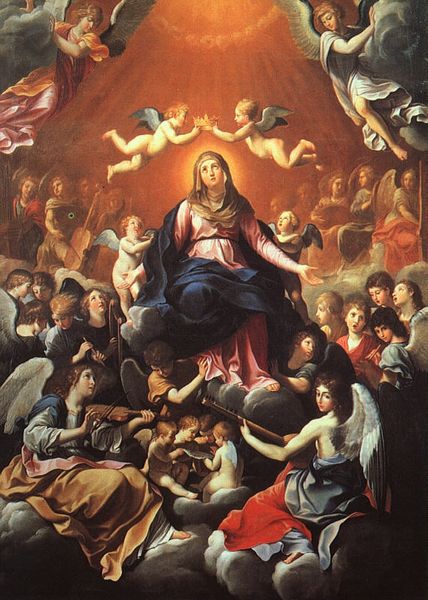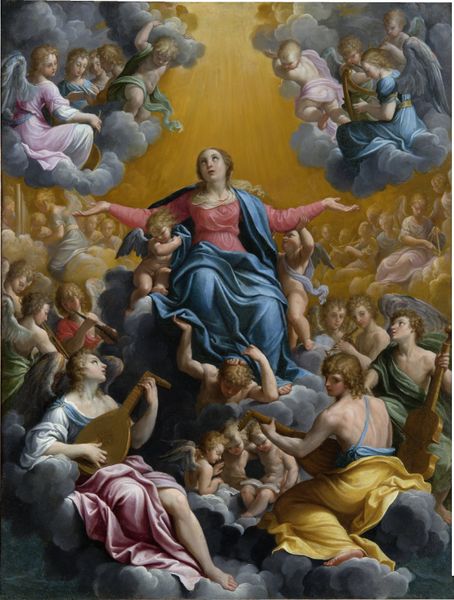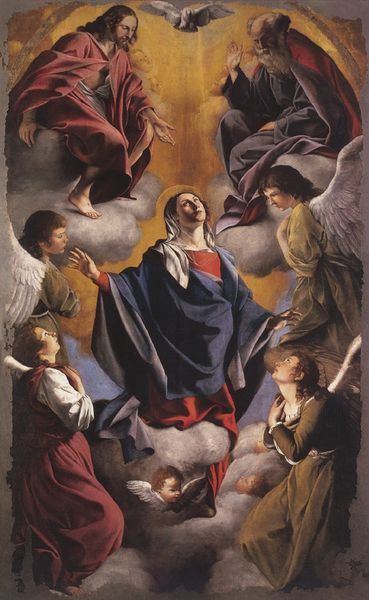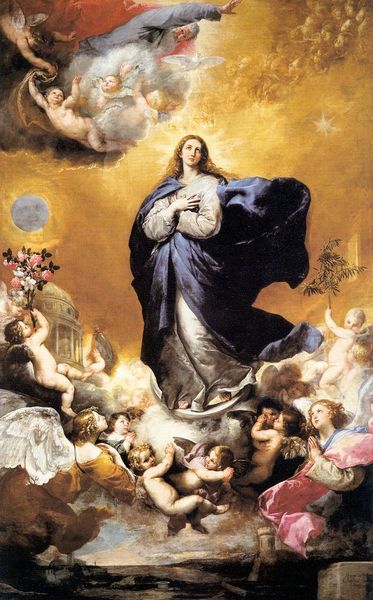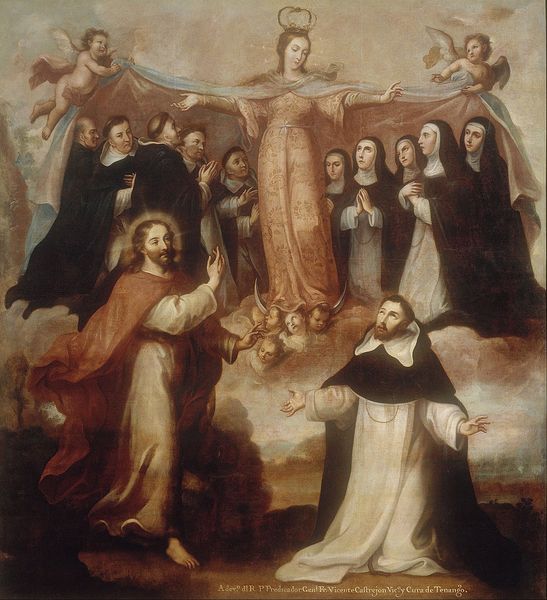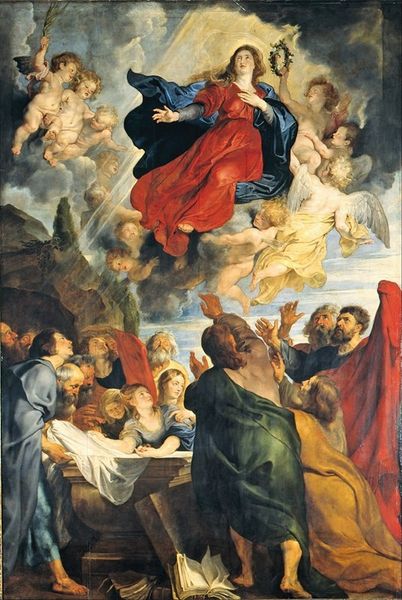
The Madonna with the Seven Founders of the Servite Order c. 1728
0:00
0:00
painting, oil-paint, sculpture, mural
#
allegory
#
baroque
#
painting
#
oil-paint
#
landscape
#
figuration
#
sculpture
#
history-painting
#
italian-renaissance
#
italy
#
mural
Dimensions: 68 13/16 × 45 9/16 in. (174.8 × 115.7 cm)
Copyright: Public Domain
Editor: This is Agostino Masucci's, The Madonna with the Seven Founders of the Servite Order, from around 1728. It's an oil painting and the composition strikes me as having two distinct zones, earthly and divine, with very different colour palettes. How do you interpret this separation in the image? Curator: The composition invites a semiotic reading. The earthly realm, populated by the founders, utilizes darker tones, focusing on form and texture through chiaroscuro. Ascending upwards, the Madonna and surrounding figures are rendered in softer, lighter hues, almost dissolving form into pure luminescence. The structural contrast between these realms isn't merely tonal, but philosophical. Notice how line becomes less defined in the upper portion. Why do you think Masucci employed this technique? Editor: Maybe to give the upper part an ethereal feel, so the hard lines are less relevant because it's divine and not quite real in the same way the bottom figures are. The colour definitely reinforces this effect. Is it all about contrast then, or does it also harmonize? Curator: Indeed. Now consider how the dark robes of the founders provide a grounding visual anchor, leading the eye upward along the implied diagonal to the Virgin. Observe, also, the deployment of gold throughout—particularly within the aureole of light surrounding Mary—does this have structural relevance? Editor: Yes, it draws my eye and emphasizes the divine, especially since there's no gold anywhere else. So the artwork's structure uses colour and line to make the meaning clearer. I initially saw two distinct halves, but they are deeply related. Curator: Precisely. We began by discussing contrast and now realize, through detailed visual analysis, that the painting is inherently structured by a dialectic. Each compositional decision—the painterly style of the upper portion, the darker palette and harsher lines of the lower—contributes to the unified reading.
Comments
No comments
Be the first to comment and join the conversation on the ultimate creative platform.
